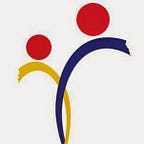How Does Approach to Multiple Disabilities Increase the Need of Community-Based Rehabilitation Programs?
To ensure the people with disabilities are not left out, the NGO members take up a multi-disability community-based rehabilitation approach.
Disabled people are often restricted as the patients’ count at the clinics and hospitals, but a change in approach in bringing them together creates additional benefits of oneness feeling to speak up for oneself and for all as denoted by belonging to a community. In the Community Based Rehabilitation (CBR) programmes, the people suffering from disabilities are identified and grouped for analysis and training purposes as in visual impairments as in hearing and speech, mental retardation and locomotor impairments. Isolation is likely to worsen their situations, and so the NGO executives come forward to influence the people categorized into community-based rehabilitation in India through multiple disabilities approach.
The multiple disabilities approach expands the outlook of the CBR programmes to tend to different disabilities to address all the people with disabilities’ requirements of the target community. So, the NGO staffs design the multi-disability CBR programmes for catering to the people suffering from these disabilities at the community level -
• Hearing Impairment
• Vision Impairment
• Loco Motor Disabilities
The Process Taken Up In the Multi-Disability Community Based Rehabilitation Approach
To implement the Multi-Disability Community Based Rehabilitation Approach, the involved NGO executives roughly divide their responsibilities into these very stages –
• Selecting the Area
• Forming Clusters
• First Module Training
• Door to Door Survey
• Second Module Training
• Intervention
Once the door-to-door surveys are done, an Audiometrist and an Otorhinolaryngologist evaluate the people with Hearing impairments. A Physiotherapist and an Orthopedic evaluate the patients with Loco-motor impairment.
When the patients are identified as curable, then they are referred to surgical or curative care to the relevant organizations. On the other hand, the incurable ones are selected for rehabilitative interventions. As soon as they have been identified, they are then grouped into impairment severity, like mild, moderate, severe and profound.
In the second module, the field workers take up Audiometrist evaluation of the people suffering from hearing impairments as well as physiotherapy, as trained by the Audiometrist and physiotherapist respectively. The same applies to people with visual impairment. These are the processes as included in disabilities by the CBR Programmes -
• Counselling
• Assessment
• Clinical
• Functional
• Rehabilitation Plan
• Intervention
• Evaluation
• Follow Up
• Case Closing
Vision Impairment
Alongside surgical interventions for persons with curable visual impairments, the CBR programmes even screen and conducts screening camps to provide daily basis treatment. When someone needs further examination and treatment, then they are referred to the nearest clinic.
Rehabilitation services based on need and age, including development, medical, social, educational and economic rehabilitation components — are given to patients with incurable conditions.
Loco Motor Disabilities
Similar to vision impairments, the NGO field workers, under the training of the physiotherapist provide therapeutic intervention. When someone needs institutionalized care, then they are referred to the physiotherapy units to receive direct services from the physiotherapist. The adults undergoing locomotor disabilities gain social acceptance of their impairments. Most patients can be cured of their locomotor disabilities without simple abduction and abduction exercises as supervised by a physiotherapist. It reduces the impact of contracture deformity. The incurable patients are given aids and appliances like crutches, tricycles, and even help them to avail government supportive services such as pensions, concessional bus passes and certifications. Younger ones are given economic rehabilitations.
Hearing Impairments
Speech Therapy, communication development among the children, participation of the parents, teachers’ cooperation form the basis of community acceptance for the patients with hearing impairments. People above 15 years, having hearing impairments need both basic training and aid to develop their communication. They are specifically addressed so that the ones communicating with sign languages are addressed, so they do not feel left out — so the screening camps are held for curable hearing impairments as well as need-based treatments.
The multi disability Community-Based Rehabilitation programme is remarkable to address the needs of a large section of people with impairments. Having knowledge in rehabilitation of different disabilities, they can influence people to win over their disabilities and lead life on their own terms.
